Everyone has a story. As a matter of fact, a story can be made out of anything and everything. However, what makes a story entertaining is the art put in place when writing or telling such story. As a writer or a potential writer, don’t be careless when converting your idea, imagination or experience into writing. You have to learn the art to make your story worth reading.
There are five essential components every writer must master. They are:
- PLOT
- SETTING
- CHARACTER
- POINT OF VIEW
- THEME
PLOT
It’s also known as a storyline. A plot is a literary term used to depict how a story is arranged by its author. It is the main event of the story. Elements of a plot are:
Introduction:
In most cases, the introduction is that juncture where the author captures the attention of his audience. It is the point where the “major” conflict is hinted at to form your chain of suspense. In short stories, the introduction surfaces within the first few paragraphs. In bulky stories, such as novels, the introduction occurs within the first few chapters.
Rising Action:
At this point, the main characters have been established and events begin to get complicated for them. If your characters make moves to resolve “the conflict” at this point, don’t allow them to solve it. Mind you, the slightest mistake can make your story predictable. Rising action should raise the expectation of your readers.
In my explanation so far, you must have seen the word conflict more than twice. Therefore, what’s conflict? Conflict is any form of struggle your main character(s) is/are faced with. The struggle might be major and central, especially in short stories.
Also, the struggle might be in bits, making it not just one struggle. It becomes a struggle. However, these struggles are built around a dominant struggle. This format is common to novels. I hope you are getting the art of story writing?
Types of conflicts:
Internal Conflict
It’s often a struggle between the character and his real self, that is, his soul, habits, choice, physical disabilities… the list has no limit.
External Conflict
It’s a struggle between your major character and the outer world. It might be one character versus another character. Your major character versus nature, that is weather, animal etc. It could also be your major character versus the society – the government, a union, a belief system etc.
Climax:
At this point, the main character is at the centre of the conflict. It is the turning point of your story. Will he survive or die a victim of the conflict? Will the conflict be resolved or not? Your readers should be left with just one question at this point. And the question must be: “What will happen next?”
Falling action:
At this stage, events that will help in resolving the conflict take place. Events and complications start falling into place. Either good or bad, the consequences of the action taken by the main character is faced with realities.
Resolution:
Here, loose ends are tied up. You don’t leave readers to guess how the story ended or what became of your characters. Also, conflicts are brought to a close, outcomes are exposed and a happy or sad ending takes place at this same stage.
Mind you, a good conclusion can implant the name of an author in the mind of readers.
SETTING
It’s about the place and time a story takes place. The setting helps to establish the mood of a story. People are not the same everywhere. If your story is built around the setting, please be consistent. To learn more about the setting, I recommend you read the novel: “Amanda’s Crime” written by Anthony Onugba.
There are multiple aspects of a literary setting:
a) Place:
This should answer the question of where. Where is the action of the story taking place?
b) Time:
This should answer the question of when. When is the action of the story taking place? It’s about the year, month, time of the day, historical period… where the events took place.
c) Atmospheric condition:
This should answer the question of what weather is it? Is it rainy, stormy… winter or summer?
d) Social condition:
It’s about the daily life of your character. How does he relate to life on a daily basis? I mean his speech, dress, habit etc.
e) Mood:
It’s about the feeling created at the beginning of the story, cheerful or frightening?
CHARACTER
A character is a person, animal or thing in a story. A character could be fictional or real.
A character can be a(n):
a) PROTAGONIST – A protagonist is a clear centre of the story, the leading figure. All major events are important to this character. Sometimes, the audience calls it the hero of the story. He is the one faced with problems or conflicts.
b) ANTAGONIST – An antagonist is the opposition or “enemy” of the main character. It could be a concept, institution or character(s). The audience often calls him the villain.
Characteristics of a character can be revealed through:
- his/her physical appearance
- what he/she says, thinks, feels, dreams and what he/she does or does not do
- what others say about him/her and how others react to him/her
POINT OF VIEW (POV) – This is the point from which the story is told. There are several variations of POV:
a) First Person – In this case, the story is being told by the protagonist or a character who relates closely with the protagonist or other characters. The person uses the pronouns “I”, “me”, “we”. Readers experience the story through this person’s eyes and only know what he/she knows and feels.
b) Second Person – Story told by a narrator who addresses the reader or some other assumed “you”; speaker uses pronouns “you”, “your”, and “yours”. Ex: You wake up to discover that you have been robbed of all of your worldly possessions.
c) Third Person – In this case, the narrator sees all of the action. Speaker uses the pronouns “he”, “she”, “it”, “they”, “his”, “hers”, “its”, and “theirs”. This person may be a character in the story.
There are two major types of third person POV:
- Limited – limited POV narrates through the eyes of a single character. He knows only the thoughts and feelings of one character. Just one character is closely followed throughout the story. The pronoun they, he and she are obtainable. This type is good for beginners.
- Omniscient – The narrator is God-like. He knows and sees everything, and can move from one character’s mind to another. Authors can be omniscient narrators by moving from character to character, event to event, and introducing information at their discretion.
THEME
This is the central message, “moral of the story,” and underlying meaning of a fictional piece. It reveals the belief the author is trying to convey. The plot is the event of the story. The theme is the morals of the story. It is what the story is about.
Worthy of note is:
- a) Story’s title usually limelight what the author is saying.
- b) Various figures of speech may be utilized to highlight the theme.
- c) Examples of common themes occurring in literature, on television, and in film are:
- Be the change.
- Love is blind.
- Believe in yourself.
- The battle within.
Read – Improving Your Writing Skills by Wanangwa Mwale, Zambia






This is beautiful!
Informative